While the fury and thunder of avalanches is over in moments, their footprints last for centuries. In an unending cycle of destruction and creation, forests become meadows, roosts for bats becomes digging grounds for grizzly bears, and the landscape bears the scars of whirlwind cascades of snow, mud, rock, and forest debris.
ExploreColumbian ground squirrel
This little animal can be an important food source for other animals such as grizzly bears. Glacier National Park, BC, 1980, Revelstoke Museum & Archives 5570.
© Parks Canada, John G Woods.
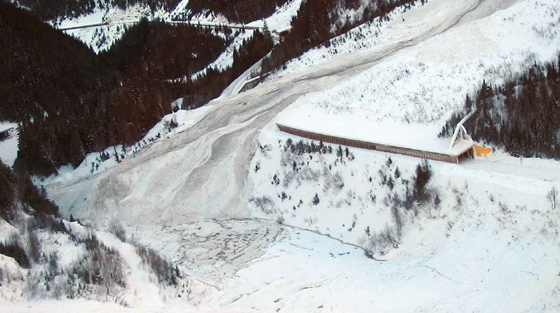
Avalanches can block rivers and shatter lake-ice. When they strike open water, they can generate huge waves.
This avalanche partially blocked the Illecillewaet River on January 18, 2011 creating a small lake. Normal flow resumed in a few days and the temporary lake disappeared. Lanark Snowshed, Trans-Canada Hwy, BC Revelstoke Museum & Archives 5557, Bruce Allen.
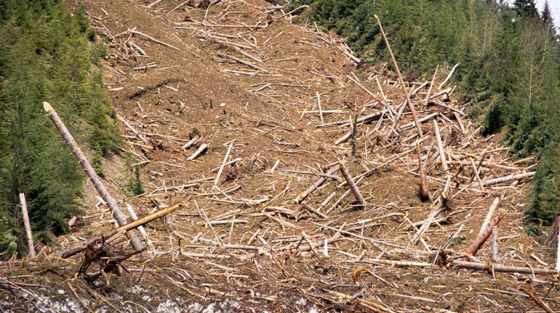
Avalanche paths can lie dormant for decades or centuries and then slide again with catastrophic results on the vegetation.
An avalanche snapped these trees and hurled them into the Beaver River valley east of Rogers Pass during the winter of 1991-92. Glacier National Park, BC, 1992 Revelstoke Museum & Archives 5554. © Parks Canada, Mas Matsushita
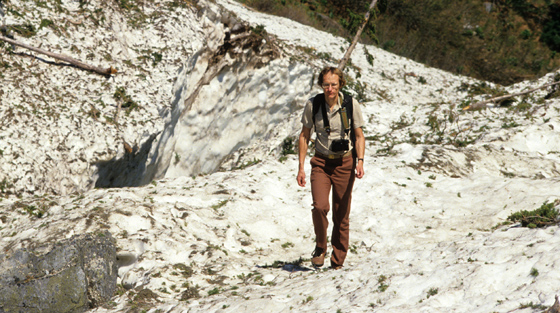
Avalanche-hardened snow can persist well into the next summer delaying plant growth and providing cool places on hot days.
This run-out zone is in the Asulkan Valley, Glacier National Park BC 1988 Revelstoke Museum & Archives 5555. © Parks Canada, Les Gyug.
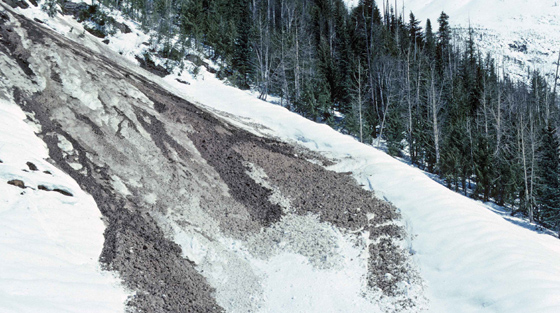
Slow-moving but massively powerful spring avalanches can move large quantities of rock, mud and debris downslope.
Unlike most winter avalanches, slides in spring often rip right down to the ground. Glacier National Park, BC, Revelstoke Museum & Archives 5556. © Parks Canada, John G Woods.
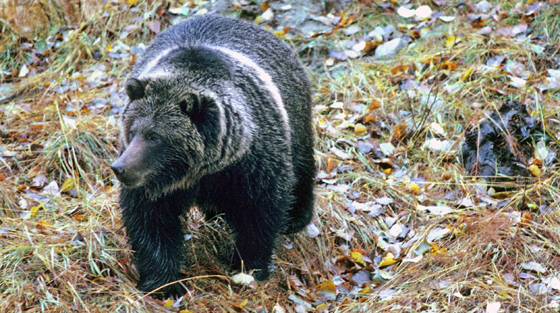
In spring and summer, avalanches paths can be rich in grizzly bear foods such as flower bulbs, ground squirrels and winter-killed mountain goats.
Research has shown that avalanche paths can be preferred habitat for grizzlies in the Columbia and Rocky Mountains. Rogers Pass, Glacier National Park, BC 1973 Revelstoke Museum & Archives 5546. © Parks Canada.
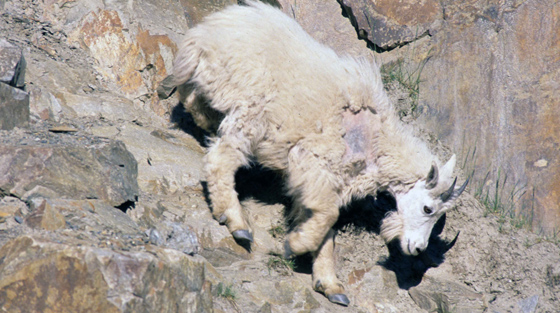
Mountain goats often live in or near avalanche paths throughout the year.
Winter-killed mountain goats have been found in avalanche deposits. Heather Hill, Glacier National Park, BC, 1990 Revelstoke Museum & Archives 5547. © Parks Canada Les Gyug.
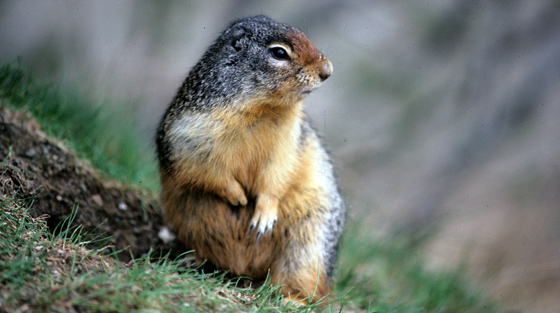
Columbian ground squirrels often colonize forest openings created by avalanches. The squirrels spend the winter safely underground in hibernation.
The Columbian ground squirrel can be an important food source for other animals such as grizzly bears. Glacier National Park, BC, 1980 Revelstoke Museum & Archives 5570. © Parks Canada John G Woods.
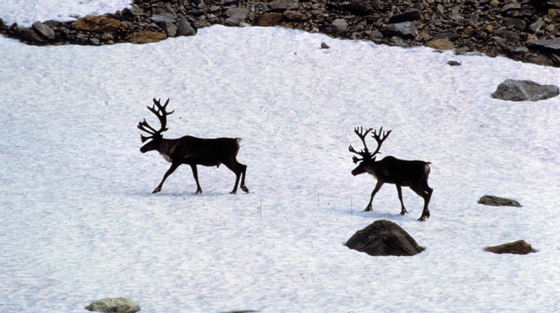
Caribou live in avalanche country throughout the year in the mountains of western Canada. Sometimes they are killed by snowslides.
Herds of caribou have been overwhelmed by snowslides. In summer, caribou may find relief from flies on snow-patches left by winter slides. Glacier National Park, BC Revelstoke Museum & Archives 5548. © Parks Canada David Hamer.
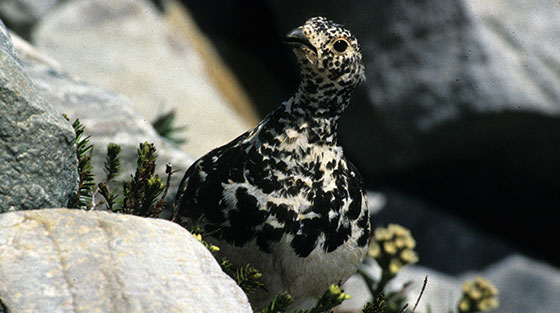
White-tailed Ptarmigan may move up and down avalanche paths over the course of a year. In winter, the shrub-lands created by snowslides provide food.
The role of avalanches in ptarmigan ecology is poorly known. Asulkan Trail, Glacier National Park, BC Revelstoke Museum & Archives 5549. © Parks Canada, Mas Matsushita.
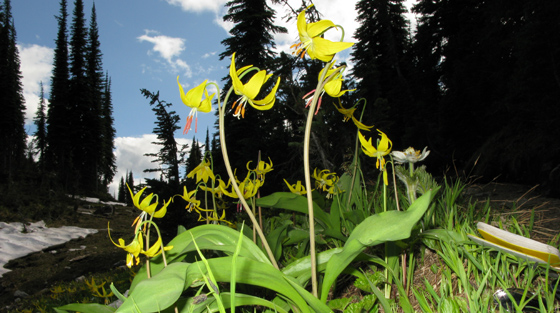
Sun-loving slide lilies often abound in avalanche paths.
Slide lilies also are known as glacier lilies or by their scientific name Erythronium grandiflorum. Mount Revelstoke National Park, BC 2011 Revelstoke Museum & Archives 5550. © John G Woods.
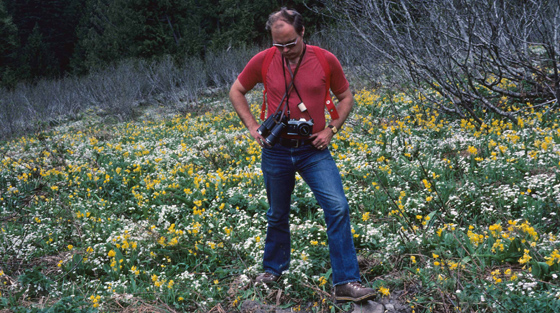
This ground has been rototilled by the long front claws of a grizzly looking for nutritious flower bulbs in an avalanche path.
Yellow slide lily (Erythronium grandiflorum) and the white spring beauty (Claytonia lanceolata) blooming in an avalanche path. Slide lilies also are valued by Aboriginal peoples as a food source. Glacier National Park, BC 1976 Revelstoke Museum & Archives 5551. © Parks Canada Barbara J Chapman.
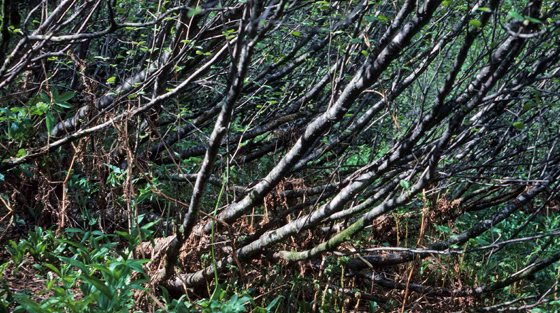
The supple stems of a slide alder (Alnus sp.) can survive the fury of an avalanche. These shrub-lands are often difficult to walk through.
This shrub forms a distinctive vegetation community. Glacier National Park, BC, 1976, Revelstoke Museum & Archives 5552. © Parks Canada, Barbara J Chapman.
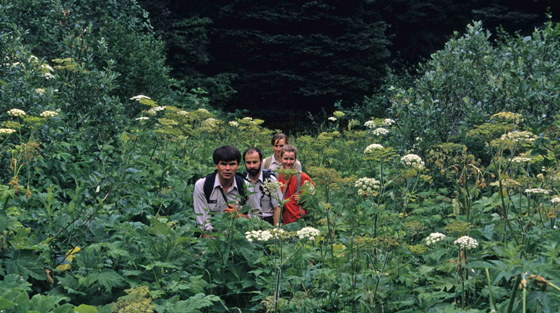
Cow-parsnip blooming in an avalanche path. Grizzly bears often forage on cow-parsnip in the Columbia Mountains.
Dense avalanche path vegetation such as this patch of cowparsnip (Heracleum maximum) can make ecological research difficult. Glacier National Park, BC, 1990, Revelstoke Museum & Archives 5553. © Parks Canada, Mas Matsushita.